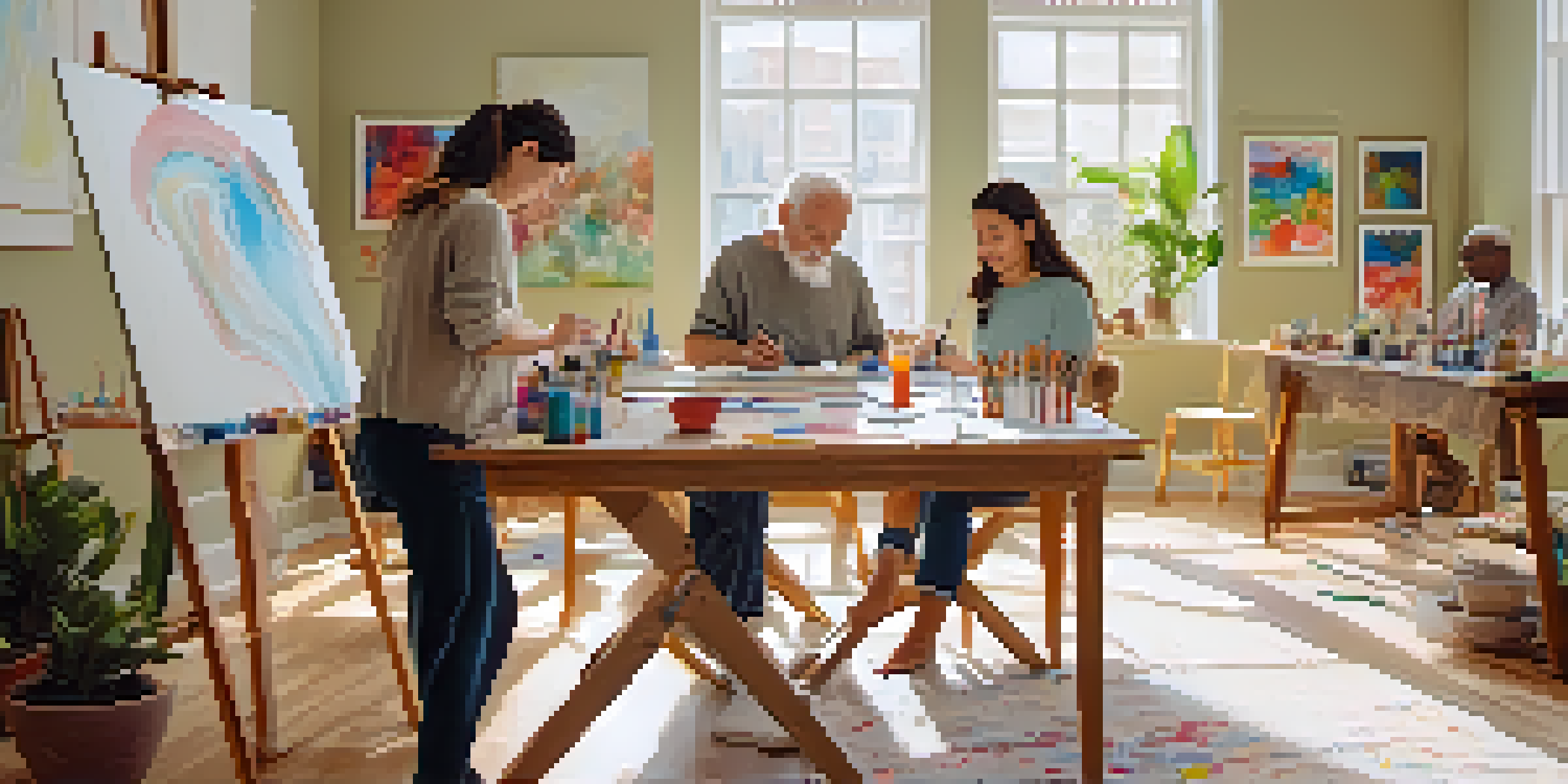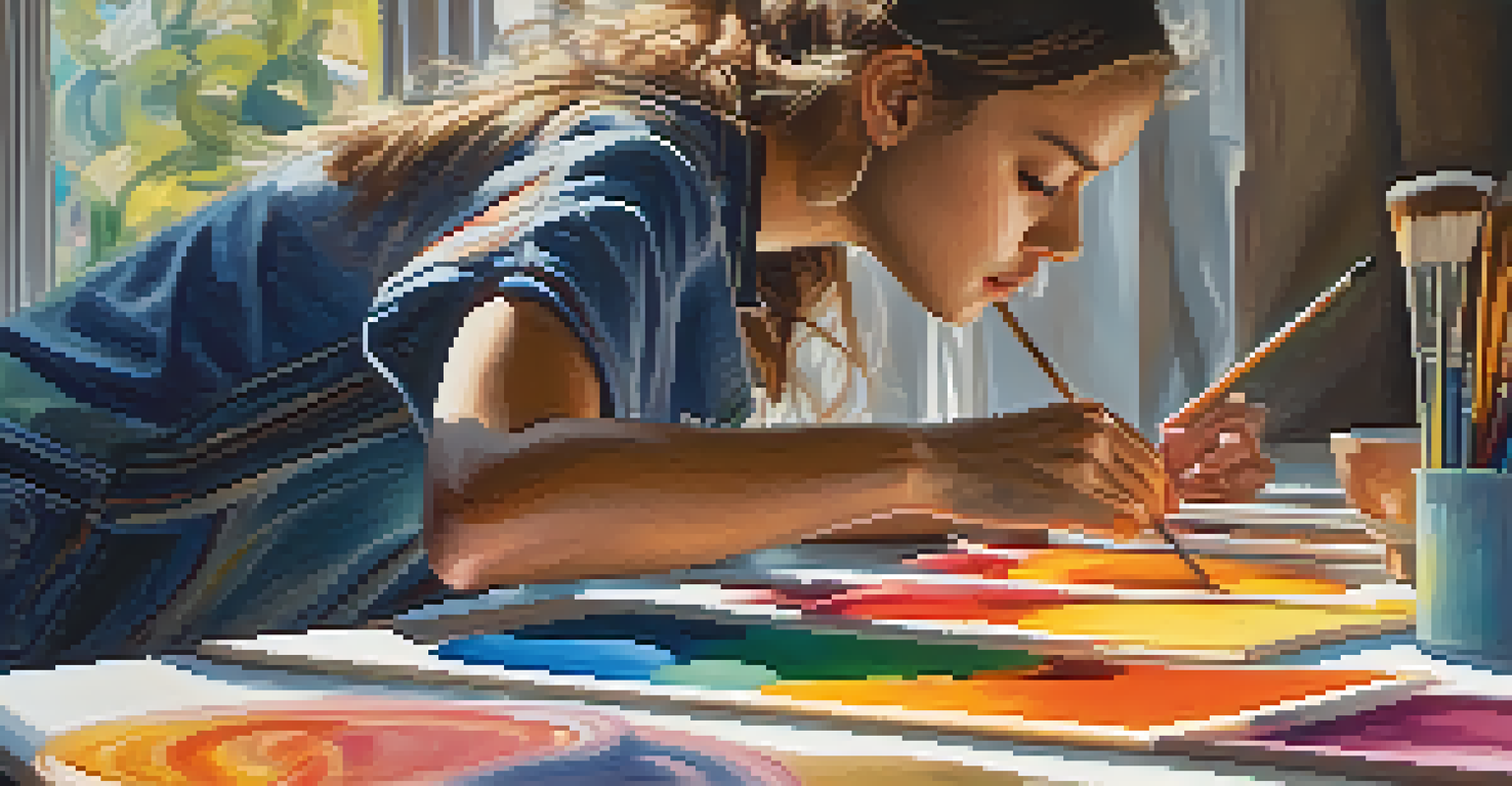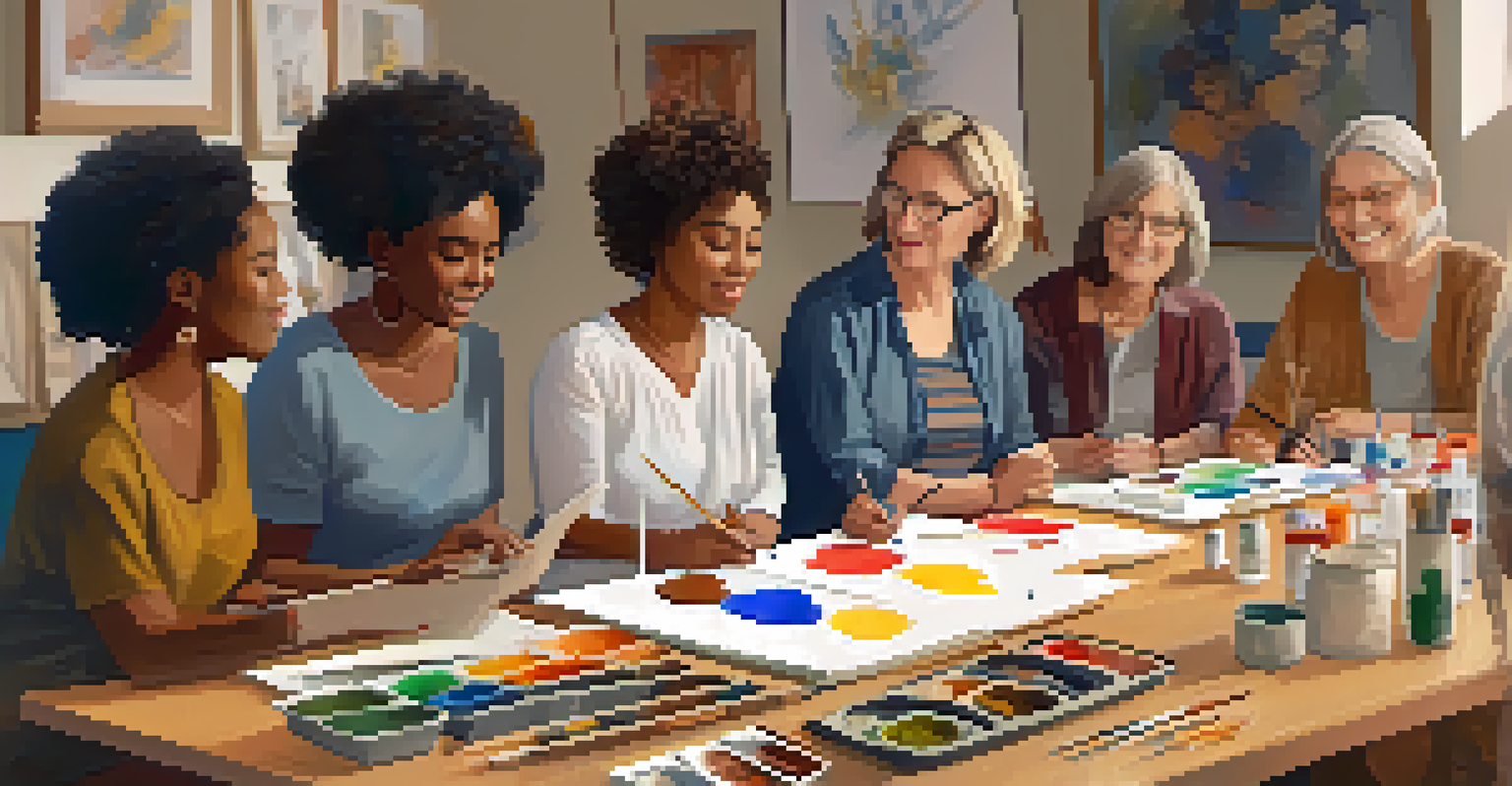The Science Behind Art Therapy and Trauma Recovery

What is Art Therapy and Its Purpose?
Art therapy is a therapeutic practice that combines art and psychology to help individuals express themselves creatively. It allows people, especially those dealing with trauma, to communicate feelings that might be too difficult to articulate with words. The primary purpose is to foster healing and self-discovery through artistic expression.
Art enables us to find ourselves and lose ourselves at the same time.
By engaging in art-making, individuals tap into their subconscious, which often reveals emotions and experiences that need attention. This process can be particularly beneficial for trauma survivors who may struggle with traditional talk therapy. Through visual art, music, or dance, they can explore their feelings and begin to process their trauma safely.
Art therapy is not about creating a masterpiece; it's about the process of creation itself. The act of making art can be cathartic, providing a release for pent-up emotions and a sense of control over one’s narrative. This is why art therapy has gained traction as a valuable tool in trauma recovery.
The Psychological Benefits of Art Therapy
Art therapy is grounded in psychology, offering numerous mental health benefits that aid in trauma recovery. Engaging in creative activities can help reduce anxiety, depression, and stress, which are often heightened in trauma survivors. This therapeutic approach allows for emotional expression in a non-threatening way.

When individuals create art, they often enter a state of flow, a concept defined by psychologist Mihaly Csikszentmihalyi. This immersive experience can provide a temporary escape from distressing thoughts and feelings, allowing the mind to relax and heal. The process of creating also promotes mindfulness, helping clients focus on the present moment instead of being consumed by past trauma.
Art Therapy Fosters Healing
Art therapy combines creative expression and psychological techniques to help individuals process trauma and promote self-discovery.
Moreover, art therapy provides a safe space for clients to explore their identity and reconstruct their narrative. This journey of self-exploration can foster resilience, enabling individuals to view their experiences from a new perspective. The therapeutic relationship formed with the art therapist further enhances this healing process.
How Art Therapy Supports Trauma Recovery
Art therapy plays a pivotal role in trauma recovery by facilitating emotional processing. Traumatic experiences can lead to a range of emotions, from grief to anger, and art therapy helps individuals confront and express these feelings. By externalizing emotions through art, clients can gain insight into their trauma.
The creation of something new is not accomplished by the intellect but by the play instinct acting from inner necessity.
Additionally, creating art can help individuals regain a sense of control that may have been lost during their traumatic experiences. This empowerment is crucial in the healing process, as it shifts the focus from victimhood to resilience. When clients see the tangible results of their creativity, it can boost their self-esteem and sense of agency.
Furthermore, art therapy encourages social connection, which is vital for recovery. Group art therapy sessions allow individuals to share their experiences and support one another, fostering a sense of community. This connection can alleviate feelings of isolation, reminding clients that they are not alone on their healing journey.
The Science Behind Art Therapy Techniques
Art therapy integrates various psychological theories and techniques to optimize healing. Techniques like guided imagery, where clients visualize serene landscapes while creating art, help reduce anxiety and promote relaxation. These strategies often utilize the brain's ability to form new neural pathways, which is essential in trauma recovery.
Research has shown that artistic expression can activate areas of the brain associated with emotional regulation. This activation allows individuals to process their trauma differently, encouraging healing on both emotional and biological levels. The creative process can also stimulate the release of endorphins, enhancing mood and fostering a sense of well-being.
Psychological Benefits of Art Therapy
Engaging in art therapy can significantly reduce anxiety and depression while fostering a sense of control and resilience in trauma survivors.
Moreover, art therapy often incorporates elements of cognitive-behavioral therapy (CBT), helping clients reshape negative thought patterns. The combination of creativity and psychological techniques creates a holistic approach, addressing both the emotional and cognitive aspects of trauma recovery.
Art Therapy Across Different Populations
Art therapy is versatile and can be tailored to suit diverse populations, including children, adults, and the elderly. For children, it provides a playful medium to express feelings they might not fully understand or articulate. Through drawing or painting, they can communicate their emotional landscapes, offering therapists valuable insights into their inner world.
Adults, especially those with complex trauma, often benefit from structured art therapy sessions that help them process their experiences. The use of various mediums—like clay, paint, or collage—can evoke different emotions and facilitate deeper healing. This adaptability is one of the strengths of art therapy, making it accessible to various age groups and backgrounds.
For the elderly, particularly those facing issues like dementia or Alzheimer’s, art therapy can stimulate memories and improve emotional well-being. Creative activities can enhance cognitive function and provide a sense of purpose, significantly improving their quality of life. This broad applicability underscores the importance of art therapy in fostering healing across the lifespan.
Real-Life Success Stories of Art Therapy
Numerous success stories highlight the transformative power of art therapy in trauma recovery. For instance, a young woman who survived a traumatic event found solace in painting. Through her artwork, she not only expressed her pain but also discovered her strength, eventually leading her to pursue a career in art therapy herself.
Another example is a veteran dealing with PTSD who turned to sculpture as a form of expression. The tactile nature of working with clay provided a grounding experience, allowing him to confront his emotions in a safe space. His journey exemplifies how art therapy can promote healing and empower individuals to reclaim their narratives.
Art Therapy for All Ages
Art therapy is adaptable for various populations, from children to the elderly, making it a versatile tool for emotional expression and healing.
These stories serve as powerful reminders of the resilience of the human spirit. They illustrate that while trauma can leave deep scars, creative expression through art therapy can facilitate healing, foster connections, and inspire hope for a brighter future.
Finding an Art Therapist: What to Consider
If you're considering art therapy as a pathway to healing, finding the right therapist is crucial. Look for a licensed professional with specific training in art therapy, as they will be equipped with the necessary skills to guide you through the process. It's also beneficial to seek someone whose approach aligns with your needs and comfort level.
During your initial consultation, don't hesitate to ask about their experience with trauma recovery and the techniques they utilize. A good art therapist will create a safe, supportive environment that encourages open expression and exploration. This rapport is essential for effective healing.

Additionally, consider the setting of the therapy sessions. Whether in a group or individual format, the space should feel welcoming and conducive to creativity. Remember, the journey of healing is personal, and finding a therapist who resonates with you can make all the difference.